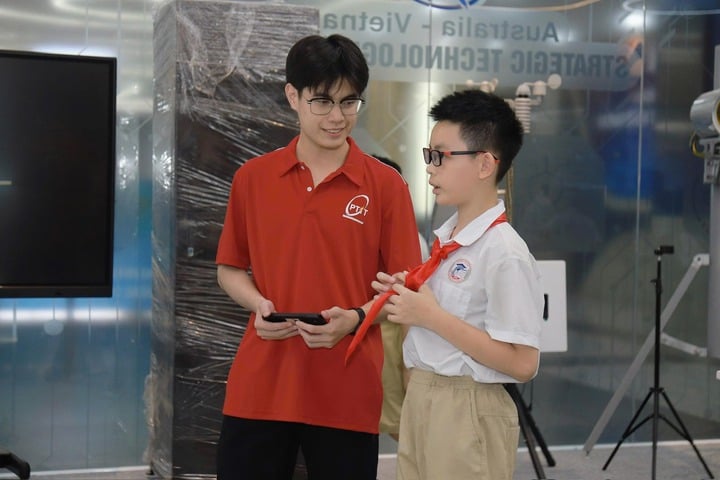
From classroom to awareness: setting the right and attainable goals
According to Mr. Ho Duc Thang, Director of the National Institute of Digital Technology and Digital Transformation, to bring AI into schools "fast but still sure", we need a methodical action roadmap, combining strategic vision and practical approach. Lessons from many pioneering countries show that: AI is not only a tool, but also a new learning environment, requiring synchronous preparation of programs, people and data security.
Bringing AI into primary school should not start with programming techniques or algorithms, but with basic awareness and technological thinking. In particular, helping students understand what AI is, know how to use it safely and have the ability to think creatively when interacting with technology.
In fact, achieving these three competencies does not require creating new subjects, but rather cleverly integrating them into existing subjects and activities. Singapore’s model is a typical example: from 2025, the country will integrate AI into the basic education program with only 5–10 hours of learning per year, focusing on cognitive skills, digital ethics and creative application. Students do not have to program, but learn to ask questions, explore and evaluate information in an algorithm-driven world.
According to experts, AI is a double-edged sword – it can create breakthrough values, but also pose risks if used incorrectly. Therefore, according to the Director of the National Institute of Digital Technology and Digital Transformation, the introduction of AI into education cannot be separated from the two mandatory "safety barriers".
The first barrier is supervision and age. Elementary school students do not have unfettered access to generative AI tools, especially those capable of generating complex visual or linguistic content. All learning activities must go through school accounts, guided and controlled by teachers.
The second barrier is safety tools, in the draft Law on Artificial Intelligence, it has proposed to form a "white list" - a set of software and AI platforms that have been assessed and certified by competent authorities for content, security, ability to protect student data and age suitability. Only tools in this list are allowed to be deployed in schools.
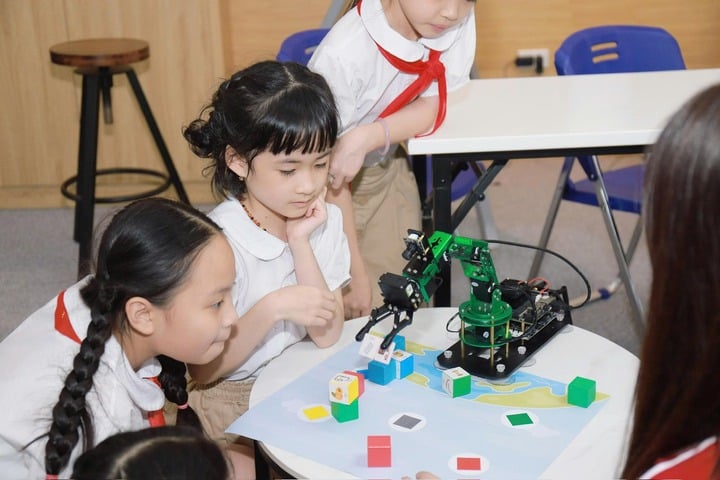
Learn to go smart from international experience
No technology can replace teachers, "the key to the success of bringing AI into schools is not the software, but the people who use it". Therefore, the most urgent task now is to train the teaching staff.
The proposal calls for the early establishment of a standardized AI training program for teachers, not only to teach them how to use the tools, but also to help them understand the nature of the technology, its applicability in teaching, and how to identify ethical risks. The immediate goal is to form a network of about 1,000 “core teachers” of AI – people who are highly trained to lead, share experiences, and spread knowledge throughout the general education system.
This model was successfully applied by Estonia: teachers go one step ahead, students follow, thanks to which this small country quickly became a model of digital education in Europe.
Singapore has opted for short, real-life modules that emphasize safety and responsibility. Estonia has prioritized teacher training and the development of a unified digital infrastructure for all schools.
Meanwhile, South Korea is a cautionary tale: the country had planned to replace all textbooks with digital platforms by 2025, but had to pause due to concerns about inequality between regions with different infrastructure conditions. This lesson shows that "running fast" is sometimes not as good as "going right".
And the US is a clear example that the success of AI education lies not only in the curriculum but also in the infrastructure. Thanks to the E-Rate program with a budget of 4.9 billion USD per year, the US ensures that all schools, even in remote areas, have stable internet connections. That is the foundation for AI to become not just a theory, but a practical tool for every student.
It can be seen that instead of mass deployment, it is necessary to propose a pilot roadmap lasting from 18 to 24 months. The first phase focuses on developing learning materials, preparing tools and training teachers. After that, the program will be piloted in a number of localities with favorable conditions in terms of infrastructure and human resources, before summarizing, evaluating and replicating nationwide. This approach helps create a model, helping other localities learn and adjust to suit their own characteristics.
Source: https://mst.gov.vn/dua-tri-tue-nhan-tao-vao-tieu-hoc-di-nhanh-nhung-phai-chac-197251020221532825.htm


![[Photo] Prime Minister Pham Minh Chinh and United Nations Secretary-General Antonio Guterres attend the Press Conference of the Hanoi Convention Signing Ceremony](https://vphoto.vietnam.vn/thumb/1200x675/vietnam/resource/IMAGE/2025/10/25/1761391413866_conguoctt-jpg.webp)


![[Photo] Prime Minister Pham Minh Chinh receives United Nations Secretary-General Antonio Guterres](https://vphoto.vietnam.vn/thumb/1200x675/vietnam/resource/IMAGE/2025/10/25/1761390212729_dsc-1484-jpg.webp)

![[Photo] National Assembly Chairman Tran Thanh Man receives United Nations Secretary-General Antonio Guterres](https://vphoto.vietnam.vn/thumb/1200x675/vietnam/resource/IMAGE/2025/10/25/1761390815792_ctqh-jpg.webp)
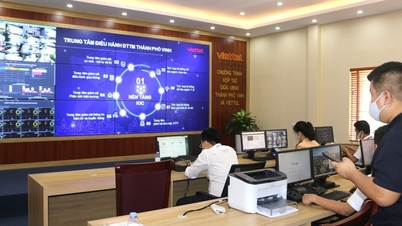

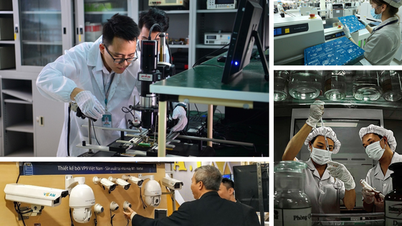

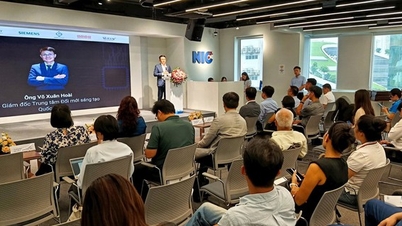
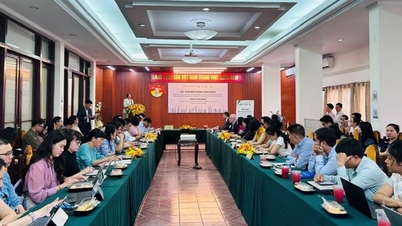







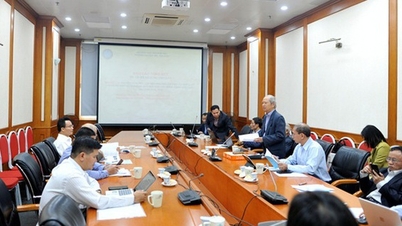
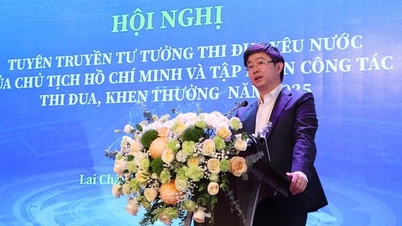
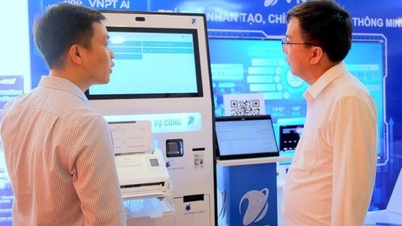
![[Photo] General Secretary To Lam meets with General Secretary and President of Laos Thongloun Sisoulith](https://vphoto.vietnam.vn/thumb/1200x675/vietnam/resource/IMAGE/2025/10/25/1761380913135_a1-bnd-4751-1374-7632-jpg.webp)







































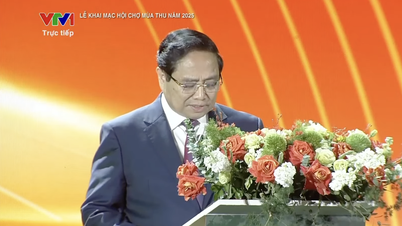








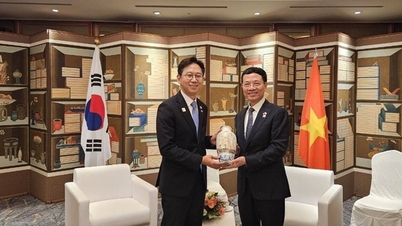
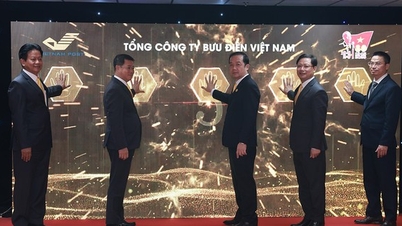









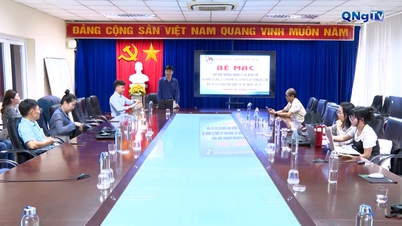



















Comment (0)